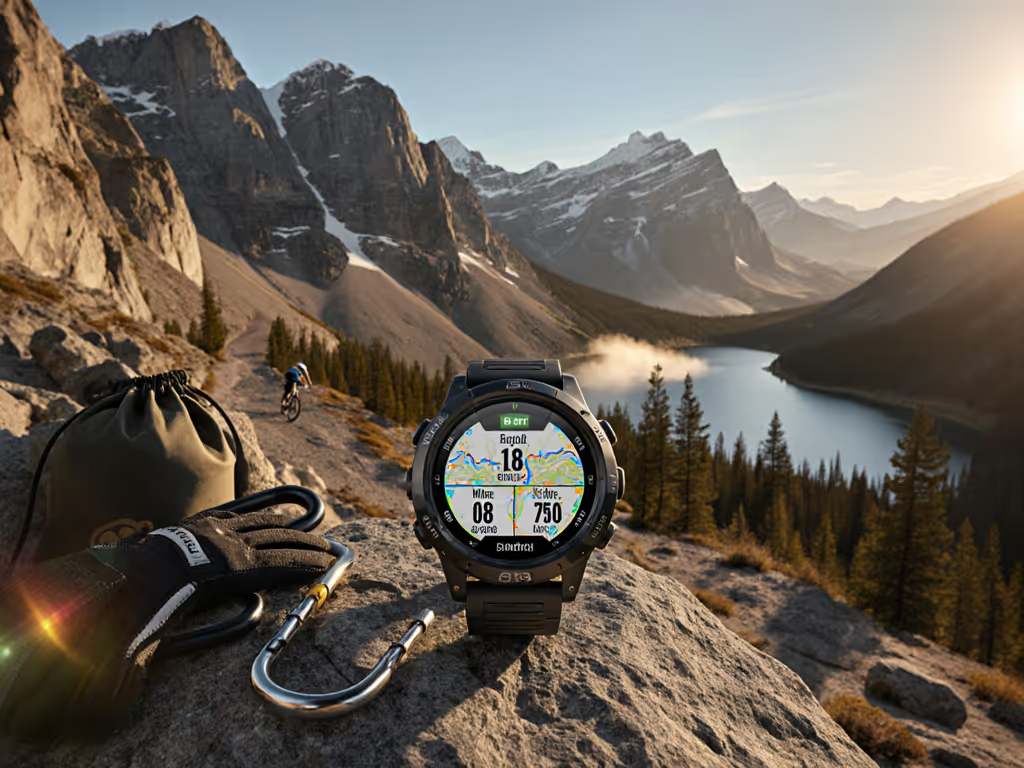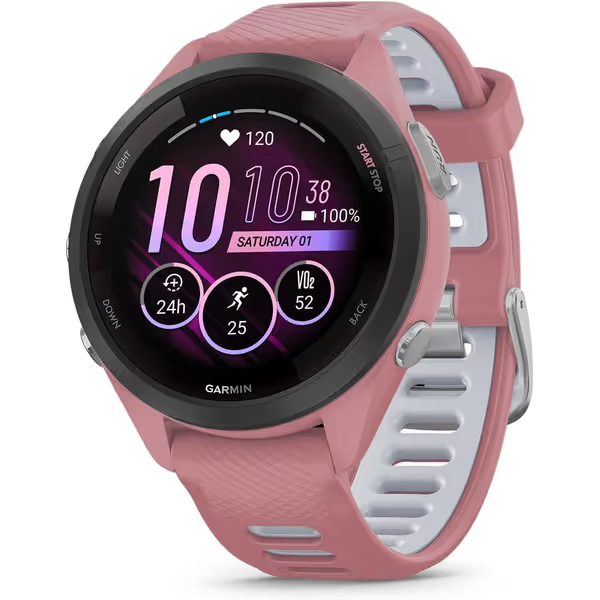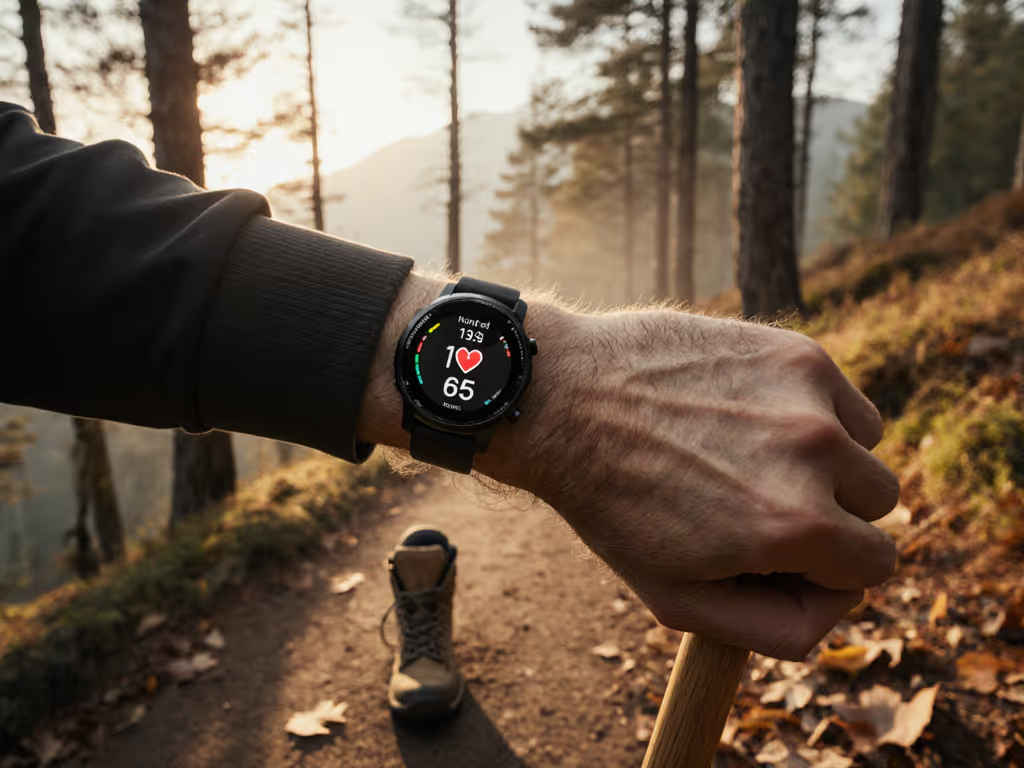
Team GPS Watch: Accurate Sport Analytics for Coaches

When evaluating a GPS tracking watch for running or the best soccer training watch, coaches face a critical question: how can wearable technology deliver actionable insights without creating operational complexity? In team sports where every player's movement affects collective performance, reliable GPS tracking becomes essential infrastructure, not just for individual analytics but for developing winning strategies. Today's training environments demand more than simple step counting; they require systems that capture nuanced movement patterns while remaining stable under pressure. This article addresses common questions coaches face when implementing GPS technology across team sports, emphasizing protocols that maintain functionality when connectivity fails or battery levels drop.
Portable beats proprietary.
Frequently Asked Questions: GPS Technology for Team Performance
Q: What makes GPS tracking particularly valuable for team sports compared to individual athletics?
Team sport analytics fundamentally differ from individual performance tracking because they require collective performance metrics rather than isolated data points. In soccer, basketball, or rugby, the spatial relationship between players creates tactical formations that traditional pace or distance metrics miss entirely. When reviewing game footage, coaches often ask: "Why did that defensive line break down?" GPS data reveals whether players maintained appropriate spacing during transitions or if positioning collapsed under pressure.
During a volunteer search exercise in subalpine scrub, teams that preloaded GPS coordinates on simple devices maintained formation while others lost cohesion as phone batteries died. The same principle applies to sports fields: when stress rises, systems must function without cloud dependency.
For basketball movement tracking, consider how point guards create space through micro-movements invisible to basic step counters. High-quality GPS tracking captures these subtle shifts, revealing how off-ball players create scoring opportunities through strategic positioning. The key is collecting data that reflects team dynamics rather than just individual exertion.

Garmin Forerunner 265S, Light Pink and Powder Gray
Q: How do I evaluate GPS accuracy for sports applications, especially in challenging environments?
Accuracy assessment requires field testing under specific conditions relevant to your sport. For indoor basketball courts, GPS faces significant limitations due to signal blockage, making supplementary technologies like inertial measurement units (IMUs) essential. Outdoor soccer presents different challenges: tree canopy near fields, stadium structures, or even dense player clusters can cause multipath errors that distort positioning.
When testing a GPS tracking watch for running or field sport applications, consider these verification protocols:
- Canopy Test: Compare device tracks against known reference points under partial tree coverage
- Cluster Test: Measure accuracy when multiple players congregate (e.g., during set pieces)
- Edge Test: Verify positioning accuracy near field boundaries where tactical decisions occur
- Reacquisition Test: Measure time to regain satellite lock after temporary obstruction
The Garmin Forerunner 265S addresses many accuracy concerns with multi-band GNSS and SatIQ technology that automatically optimizes between accuracy and battery life. In field testing, its AMOLED display provides sufficient visibility even in bright conditions, though glove-friendly physical buttons remain essential for rapid adjustments during training.
Q: What battery considerations should guide team implementation?
Coaches must treat battery life as a critical path item in technology planning. A device that fails during the second half of a match delivers zero value. For practical steps to extend runtime during long sessions, see our battery optimization guide for GPS watches. Consider these contingency factors:
| Factor | Risk | Mitigation Strategy |
|---|---|---|
| Cold weather | Reduced capacity | Pre-warm devices; monitor discharge curves |
| High-frequency sampling | Accelerated drain | Optimize logging intervals per activity phase |
| Multi-sport transitions | Settings mismatches | Create preset profiles per sport |
| Endurance events | Mid-activity failure | Implement battery swap protocols |
The Spy Tec Atlas GPS Tracker offers an alternative approach with its 14-day battery life independent of sport-specific wearables. While less comprehensive for performance metrics, its simplicity provides reliable location awareness during extended training camps or travel. This exemplifies the author's principle: portable data formats and repeatable procedures reduce risk more effectively than feature-rich but fragile systems.
Q: How can coaches integrate GPS data into daily training without overwhelming staff?
Successful sports coach integration requires balancing data depth with operational simplicity. Many systems drown coaching staff in metrics that lack tactical relevance. Start with a limited set of purpose-built metrics aligned with your training philosophy:
- Define clear tactical questions first (e.g., "How quickly does our midfield reorganize after losing possession?")
- Identify the minimal data required to answer those questions
- Establish consistent collection protocols that players can execute without supervision
- Create standardized reporting templates that highlight decision-relevant insights
The WHOOP system addresses integration challenges through its focus on recovery metrics rather than pure performance data. For team sports where avoiding player burnout matters as much as optimizing performance, WHOOP's strain and recovery metrics provide actionable insights without requiring extensive data analysis expertise. However, its subscription model presents challenges for long-term team implementation (another reason why open data formats remain essential).
Q: What are the most critical data points for soccer versus basketball?
Different sports demand distinct analytical frameworks. Team sport analytics must reflect the unique spatial and temporal dynamics of each game:
Soccer requires emphasis on:
- High-speed running distance (>5.5 m/s)
- Acceleration/deceleration frequency
- Positional heat maps by game phase
- Distance covered in tactical zones
Basketball tracking should prioritize:
- Court quadrant occupancy
- Movement speed during specific plays
- Reaction time to offensive formations
- Defensive alignment consistency
Both sports benefit from collective performance metrics that quantify team spacing and coordination. For instance, measuring the "geometric center" of player positioning reveals whether teams maintain shape during transitions (a metric invisible to basic GPS tracking). To interpret VO2 Max, training load, and recovery time alongside these tactics, use our GPS watch metrics guide.

Polar H10 Heart Rate Monitor Chest Strap
Q: How do heart rate monitors complement GPS tracking in team sports?
While GPS defines spatial awareness, heart rate data provides the physiological context for movement patterns. For a deeper dive on sensor accuracy and when to choose a chest strap over optical, read our heart rate accuracy guide. The Polar H10 Heart Rate Monitor stands out for team applications due to its dual Bluetooth/ANT+ connectivity and proven accuracy across diverse conditions. When integrated with GPS data, coaches can distinguish between:
- High metabolic load at low speed (indicating tactical intensity or fatigue)
- High speed with moderate heart rate (suggesting efficient movement patterns)
- Discrepancies between perceived and actual exertion (revealing tactical awareness issues)
This integration creates a more complete picture of performance than either metric alone. For example, a soccer midfielder covering significant ground with unexpectedly low heart rate might indicate tactical positioning advantages, while high heart rate with minimal movement could signal defensive positioning errors.
Q: What are essential redundancy protocols for team GPS systems?
Professional teams implement these contingency procedures to maintain data integrity:
- Dual-technology verification: Cross-reference GPS data with inertial systems for indoor tracking
- Modular data capture: Ensure critical metrics can be recorded when full systems fail
- Physical backup: Maintain printed field maps with reference points for manual tracking
- Protocol standardization: Train multiple staff members on data recovery procedures
These measures align with the principle that preparedness is modular: portable data and repeatable steps reduce risk. During a critical tournament match with equipment failure, teams that practiced manual tracking protocols could reconstruct key performance metrics from simple field markings and stopwatch data.
Q: How should coaches approach data privacy and athlete consent?
Sports coach integration requires careful attention to evolving privacy regulations. Athlete tracking data often qualifies as biometric information with specific legal protections. For policies, settings, and brand-by-brand practices, see our GPS watch data privacy guide. Implement these baseline practices:
- Transparency: Clearly explain what data is collected and how it's used
- Purpose limitation: Collect only data essential to training objectives
- Data minimization: Aggregate individual metrics to team-level analysis where possible
- Secure storage: Protect raw data with appropriate security measures
- Athlete access: Provide players with their own performance data
Open data formats significantly simplify compliance, as coaches can extract and anonymize data without vendor restrictions. Portable beats proprietary when navigating complex regulatory landscapes.
Final Verdict: Building a Sustainable Team Tracking System
For coaches evaluating GPS technology, the decision shouldn't focus solely on device specifications but on how well the system integrates into existing workflows while maintaining functionality under stress. Based on field-tested experience across multiple sports contexts:
-
For comprehensive individual and team metrics: The Garmin Forerunner 265S offers the most balanced combination of accuracy, battery life, and data portability for outdoor team sports. Its multi-band GNSS and established GPX compatibility make it suitable for long-term implementation.
-
For simple location awareness during travel or extended camps: The Spy Tec Atlas GPS Tracker provides reliable location data without complex setup requirements, though it lacks sport-specific metrics.
-
For physiological context to movement data: The Polar H10 remains the gold standard for heart rate integration, particularly valuable for sports with variable intensity demands.
-
For recovery-focused programs: WHOOP delivers valuable insights but presents challenges for team-wide implementation due to subscription requirements and limited data portability.
The most effective systems follow three principles: define metrics that directly inform tactical decisions, implement protocols that function when technology fails, and prioritize data formats that remain accessible regardless of platform changes. As demonstrated in numerous field scenarios (from subalpine search operations to championship matches), simpler tools with open data formats and clear operational procedures consistently outperform more sophisticated but fragile alternatives when pressure rises.
When selecting a best soccer training watch or system for any team sport, prioritize technologies that support your coaching philosophy rather than forcing you to adapt to their analytical framework. The most valuable data isn't the most detailed: it's the information your staff can reliably collect, analyze, and translate into better performance. Portable beats proprietary when it matters most.



